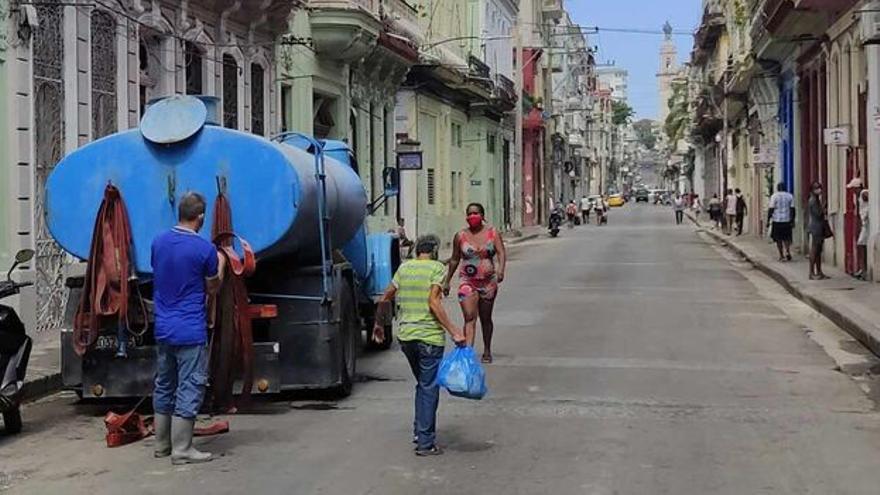
![]() 14ymedio, Havana, 21 July 2023 — At least 156,000 people do not have safe and stable access to water service in Cuba, Antonio Rodríguez, president of the National Institute of Hydraulic Resources, revealed on Wednesday. During one of the sessions of Parliament, the official warned that the constant breakdowns of the Island’s aqueduct system due to obsolete equipment and damaged pipes, cause “substantial losses” daily of both water and money.
14ymedio, Havana, 21 July 2023 — At least 156,000 people do not have safe and stable access to water service in Cuba, Antonio Rodríguez, president of the National Institute of Hydraulic Resources, revealed on Wednesday. During one of the sessions of Parliament, the official warned that the constant breakdowns of the Island’s aqueduct system due to obsolete equipment and damaged pipes, cause “substantial losses” daily of both water and money.
According to the Institute’s records, in Cuba there are 10.9 million inhabitants (98.6% of the total population) with coverage of the basic water service through aqueducts or pipes. Of these, 475,000 are “permanently” dependent on tank trucks.
Some 20% of the water available on the Island is dispatch through the aqueduct systems, where much of the liquid is lost due to the poor technical state of the hydraulic infrastructure.
About 2.07 million people receive water in their homes intermittently, every three or more days. Similarly, the families of 478 population settlements, where 2,000 Cubans live, have a totally or partially damaged aqueduct system.
Rodríguez reported that in the past month alone there were 260 breakdowns on the Island, which left more than 380,000 people without access to water. The situation led the inhabitants in the neighborhood of Guatemala, in Mayarí, Holguín, to take to the streets in the early morning of June 27 to demand the restoration of water after being without service for three months.
The crisis affected the population in Havana from the poorest neighborhoods to the inhabitants of the exclusive Miramar neighborhood, where the diplomatic headquarters are housed. The Government reported that the deficit in water service affected more than 200,000 families in the capital, 10% of the population.
The water deficit has also increased the number of thefts. A resident of Luyanó, in Havana, told 14ymedio that they must be alert so that the neighbors do not steal water from the residential connections with hoses. “You have to be aware at night, when the dogs are barking,” he added.
To alleviate the crisis, the president of the Institute said that 1,390 new pumps are expected in the next two years, and their operation will not depend on the National Electrical System. This machinery will provide service for 481,342 Cuban families.
Rodríguez acknowledged that the “tense situation” has not been resolved in the last five years due to difficulties in importing the parts to repair the electric pumps. The official pledged to solve the problem in the next three years, and more than 1.3 million dollars have been allocated to bring in the equipment.
However, the projections are not encouraging for Cuban families because the water level, both from the surface and underground sources, has been reduced with the drought. In Guantánamo, for example, the Hydraulic Samping Company confirmed that the aquifer mantle is scarce due to the characteristics of a poorly permeable soil.
This leads to more wells being drilled in search of water, without satisfactory achievements in many cases. According to a note from the provincial newspaper Venceremos, the company initiated a plan to dig six new wells in the face of the lengthening of drought periods.
Translated by Regina Anavy
____________
COLLABORATE WITH OUR WORK: The 14ymedio team is committed to practicing serious journalism that reflects Cuba’s reality in all its depth. Thank you for joining us on this long journey. We invite you to continue supporting us by becoming a member of 14ymedio now. Together we can continue transforming journalism in Cuba.
